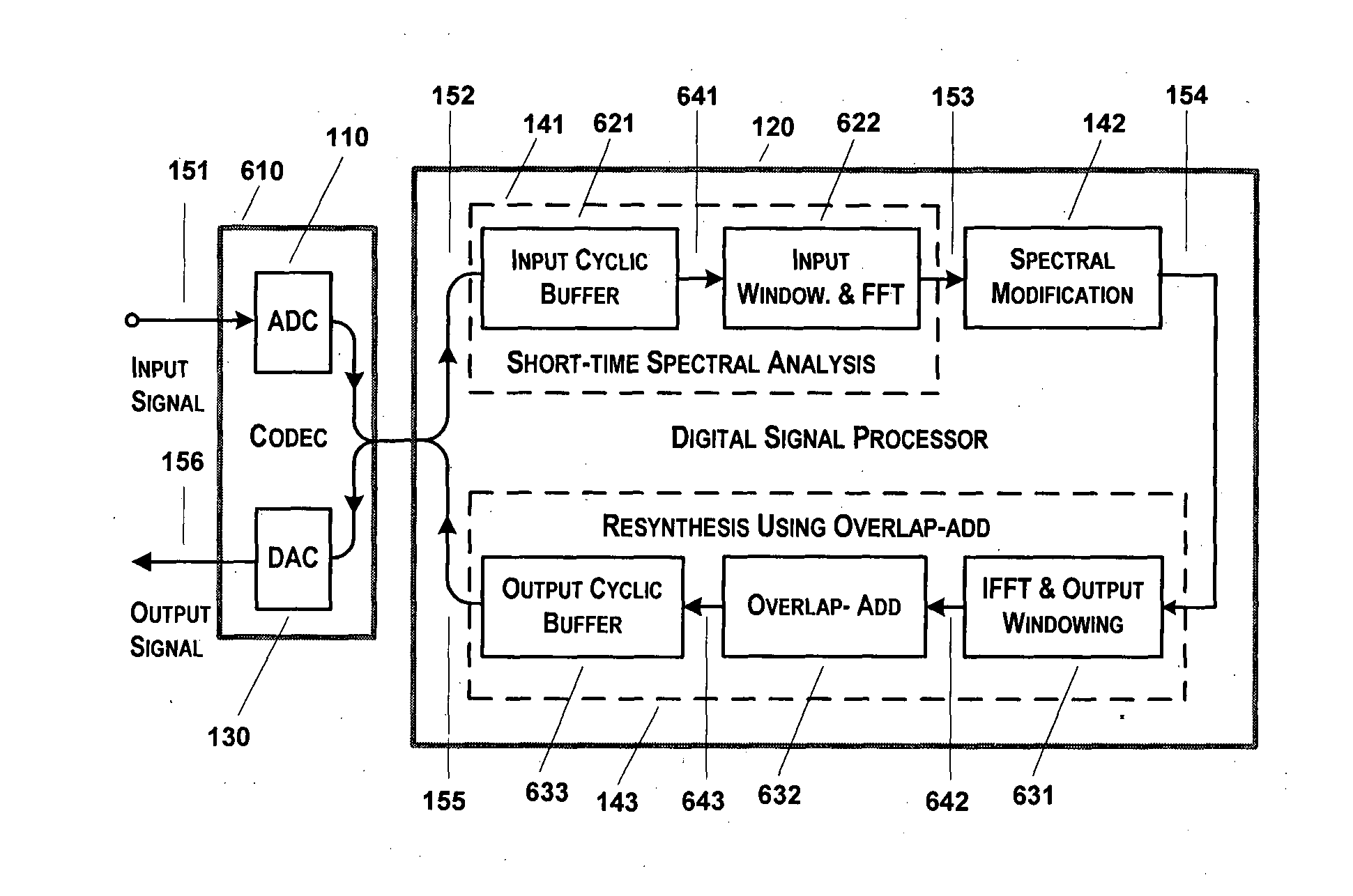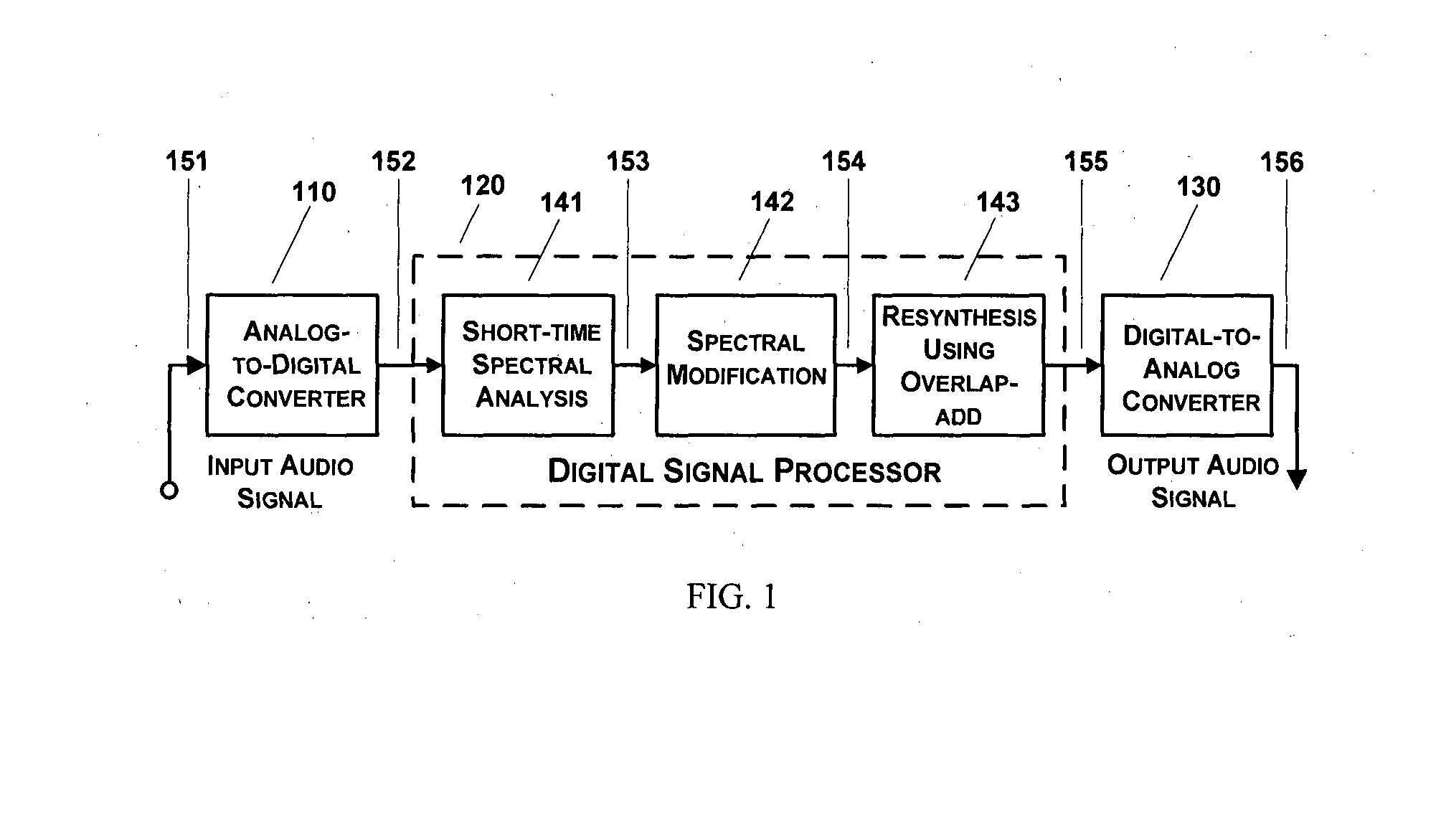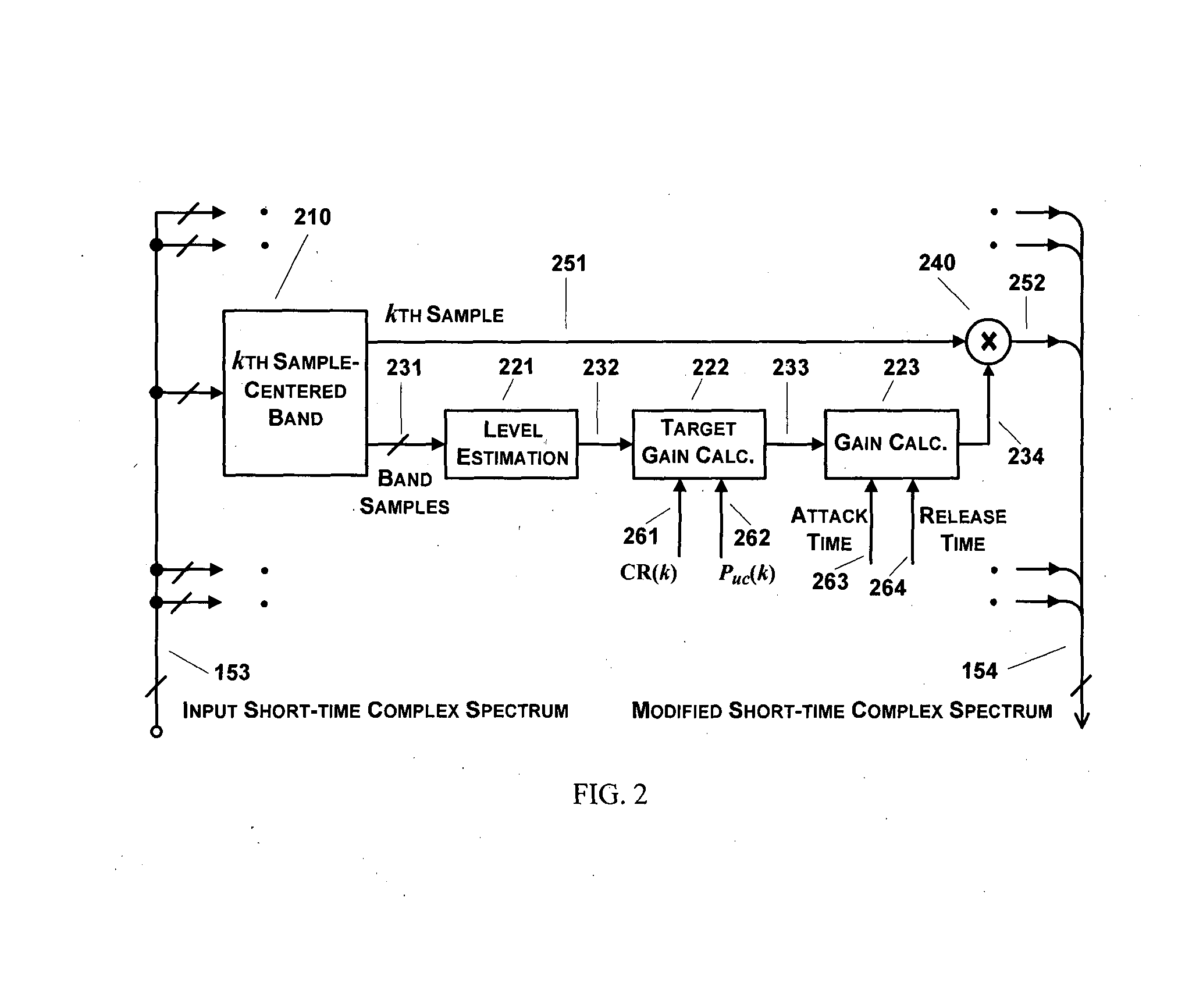Dynamic range compression with low distortion for use in hearing aids and audio systems
a dynamic range compression and low distortion technology, applied in the field of dynamic range compression of audio signals, can solve the problems of significant degraded speech perception, abnormal growth of loudness, and significant reduction of dynamic range of hearing of listeners, and achieve the effect of reducing computational requirements
- Summary
- Abstract
- Description
- Claims
- Application Information
AI Technical Summary
Benefits of technology
Problems solved by technology
Method used
Image
Examples
Embodiment Construction
[0025]The present invention discloses dynamic range compression in audio systems by using sliding-band compression and more specifically in hearing aids to compensate for frequency-dependent loudness recruitment associated with sensorineural hearing loss without introducing the distortions generally associated with the single band and multiband compression systems. It uses a frequency-dependent gain function calculated dynamically from short-time power spectrum of the signal. The gain for each spectral sample is calculated on the basis of power in a band centered at it. The bandwidth is selected to approximate the frequency resolution of the auditory system and changes from a small value at the low frequency end of the spectrum to a large value at the higher frequency end. It can be selected as one-third octave bandwidth, bandwidth corresponding to equal increments on the mel scale, or auditory critical bandwidth. The time-varying power in the band is used to calculate a target gain...
PUM
 Login to View More
Login to View More Abstract
Description
Claims
Application Information
 Login to View More
Login to View More - R&D
- Intellectual Property
- Life Sciences
- Materials
- Tech Scout
- Unparalleled Data Quality
- Higher Quality Content
- 60% Fewer Hallucinations
Browse by: Latest US Patents, China's latest patents, Technical Efficacy Thesaurus, Application Domain, Technology Topic, Popular Technical Reports.
© 2025 PatSnap. All rights reserved.Legal|Privacy policy|Modern Slavery Act Transparency Statement|Sitemap|About US| Contact US: help@patsnap.com



